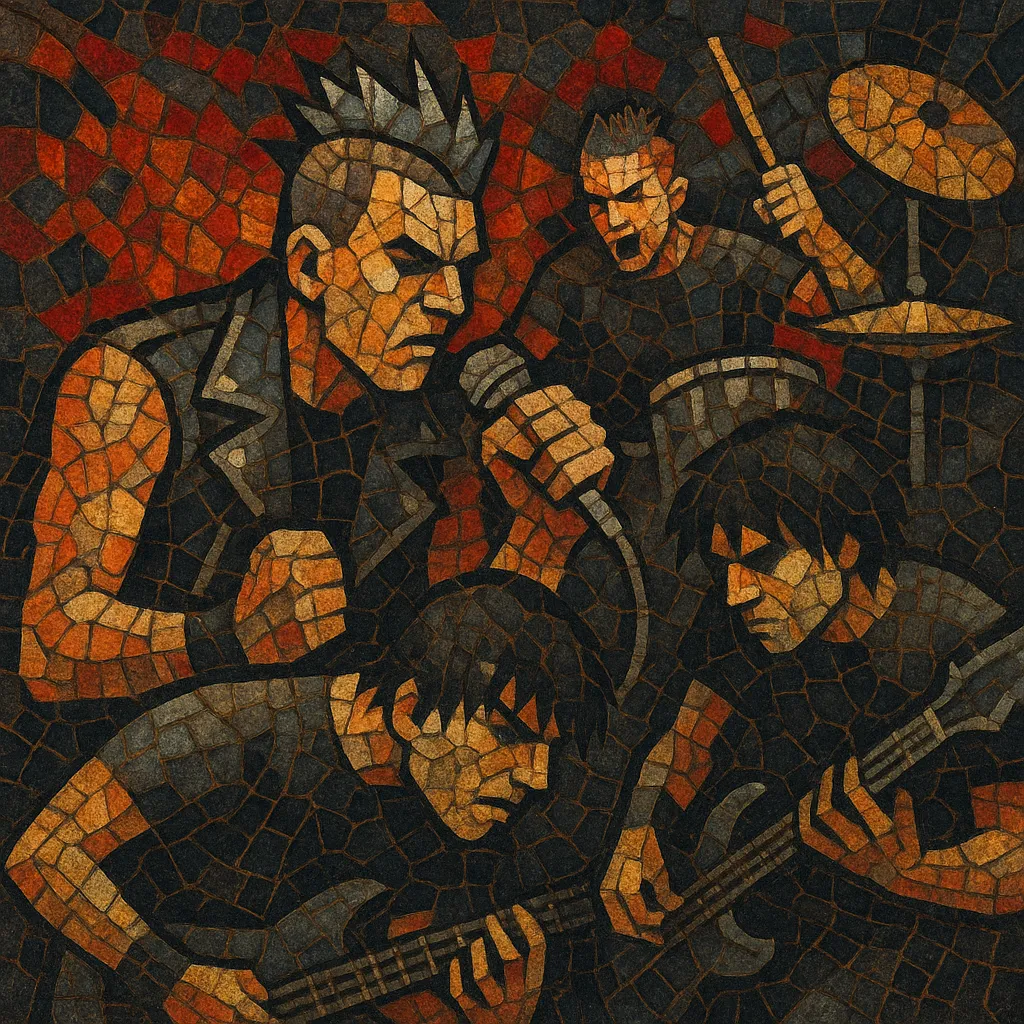
Hardcore punk is a faster, louder, and more abrasive offshoot of late-1970s punk rock. Songs are typically short (often under two minutes), propelled by rapid tempos, aggressive down‑stroked guitar riffs, and shouted or barked vocals.
The style prioritizes raw energy over technical ornamentation: power‑chord harmony, minimal guitar solos, and tightly locked rhythm sections dominate. Lyrically, hardcore punk is intensely direct—often political, anti‑authoritarian, and socially critical—reflecting a DIY ethic that values independent labels, self‑organized shows, and community‑run spaces.
The genre coalesced in U.S. scenes such as Los Angeles, Washington, D.C., New York, and Boston, and soon spread internationally. Its velocity, attitude, and grassroots infrastructure profoundly shaped underground music and paved the way for numerous metal, punk, and alternative subgenres.
Hardcore punk emerged in the late 1970s United States as a reaction to the perceived commercialization and slowing tempo of first‑wave punk rock. Early bands in Southern California and Washington, D.C. distilled punk’s speed and minimalism into even shorter, more intense bursts, emphasizing community and self‑reliance through DIY venues, zines, and independent labels.
By the early 1980s, scenes in Los Angeles (Black Flag, Circle Jerks, Descendents), Washington, D.C. (Minor Threat, Bad Brains), New York (Agnostic Front, Cro‑Mags), and Boston solidified the hardcore template: rapid tempos, shouted vocals, and socially charged lyrics. Labels like SST, Dischord, and Touch and Go became hubs for the movement. Concurrently, the U.K.’s “UK82” wave adopted a harder, faster approach parallel to U.S. hardcore.
Hardcore began branching out: D‑beat, crust punk, and powerviolence pushed extremity; the “youth crew” movement emphasized unity and straight‑edge values; and crossover thrash fused hardcore’s speed with metal’s riffing, influencing thrash and later metalcore. Bands experimented with melody and dynamics, laying groundwork for post‑hardcore and emo.
Throughout the 1990s, hardcore’s DIY infrastructure nurtured new waves—melodic hardcore, metallic hardcore, and revivalist scenes—while its ethos fed alternative rock, grunge, and noise rock. In the 2000s and beyond, hardcore remained a vital live tradition with global scenes, continuing to spawn hybrids and sustain a culture built on community, independence, and cathartic intensity.

